The Mystery of the Columns of California's Lake Crowley
Categories: Nature | North America
By Pictolic https://pictolic.com/article/the-mystery-of-the-columns-of-california39s-lake-crowley.htmlLake Crowley in California is a popular tourist destination. No, they don’t go there for the beaches, since the state has plenty of this goodness. The lake is famous for its unique twisted columns supporting the steep shore. It’s hard to believe that these are natural formations that no man has touched. Nevertheless, it is so. The Crowley Lake Colonnade was created thanks to the forces of nature, which only worked on the stone for a few decades.
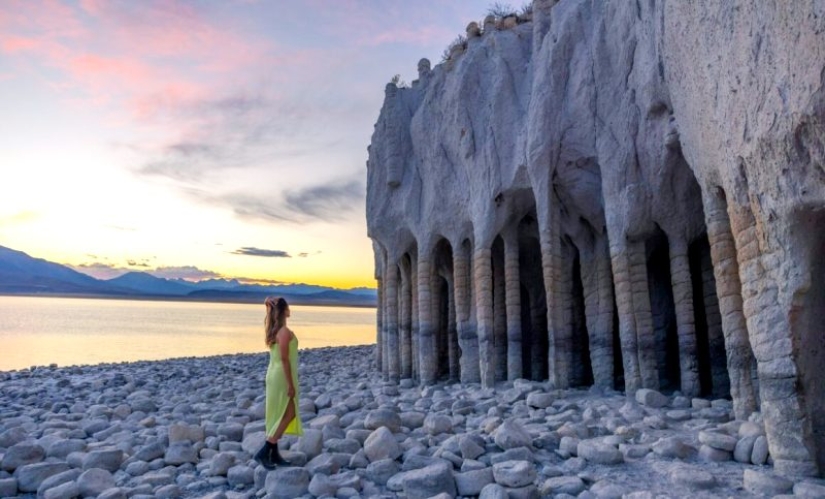
Twisted columns stand vertically and have the same diameter. Therefore, it seems that they were carved by ancient architects. The colonnade is similar to a Roman or Greek one, damaged by time, but generally well preserved. Guests of the lake are not always ready to believe guides and often argue with them about the origin of these formations.
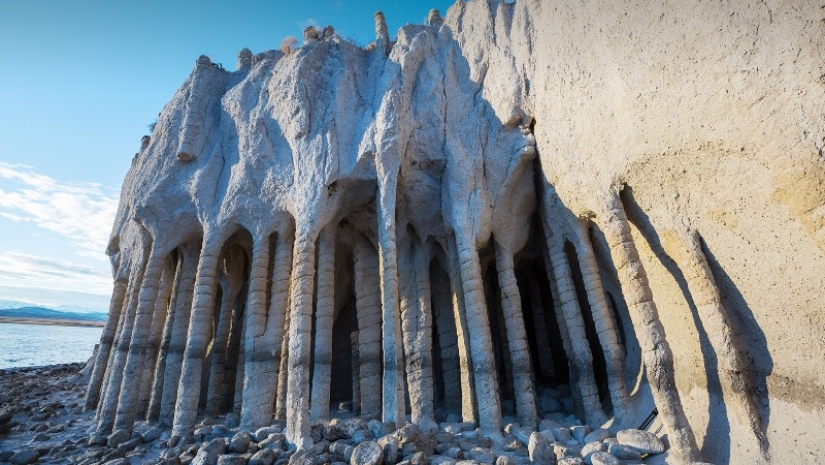
Crowley Lake is not exactly a lake from a scientific point of view. This is an artificial reservoir, the water level of which is regulated by gateways in the dam. Crowley Reservoir was formed in 1941 with the construction of the Long Valley Dam. Before this, the unremarkable Owens River flowed here.
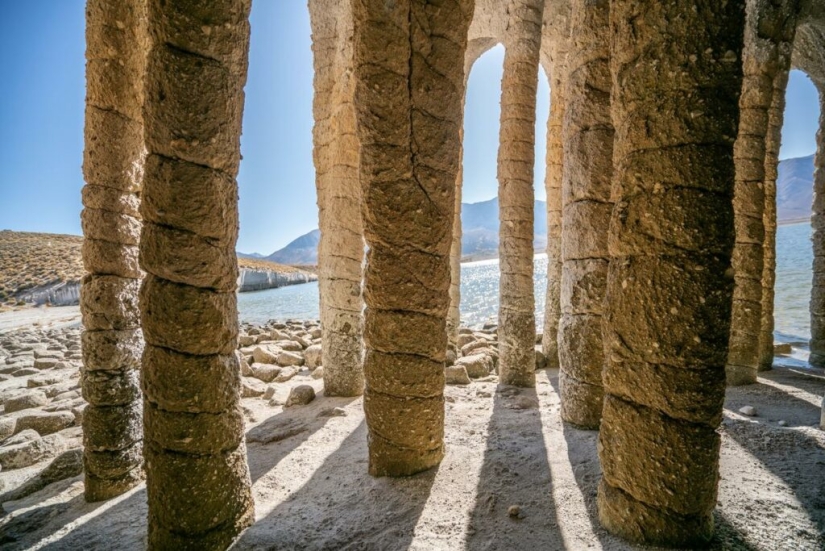
When the water rose, the area where the amazing colonnade is now located came under the influence of water. The reservoir was either filled to the brim or released. The coastline of sedimentary rocks began to collapse under the influence of water, wind and temperature changes.
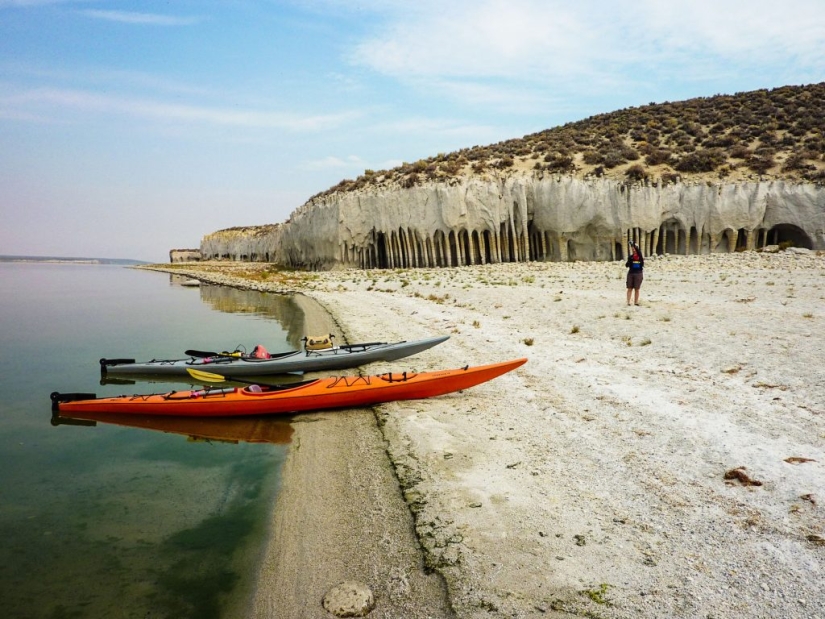
Softer rocks erode more quickly than dense structures. Soon the forces of nature removed everything “unnecessary”, leaving only columns made of durable stone.
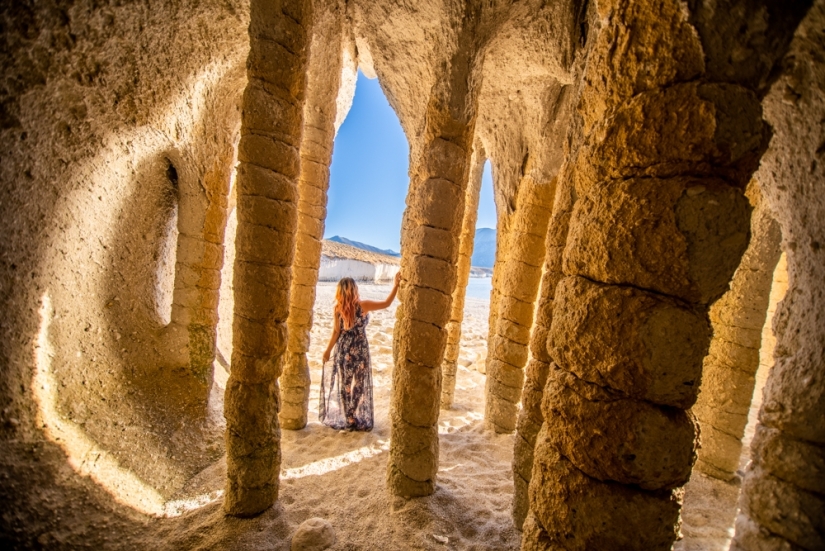
Scientists established this quickly, and the process can still be observed now. But how vertical columns from other rocks ended up in sedimentary rocks, geologists have only recently figured out. It's all about the interaction of cold melt water and hot volcanic ash.
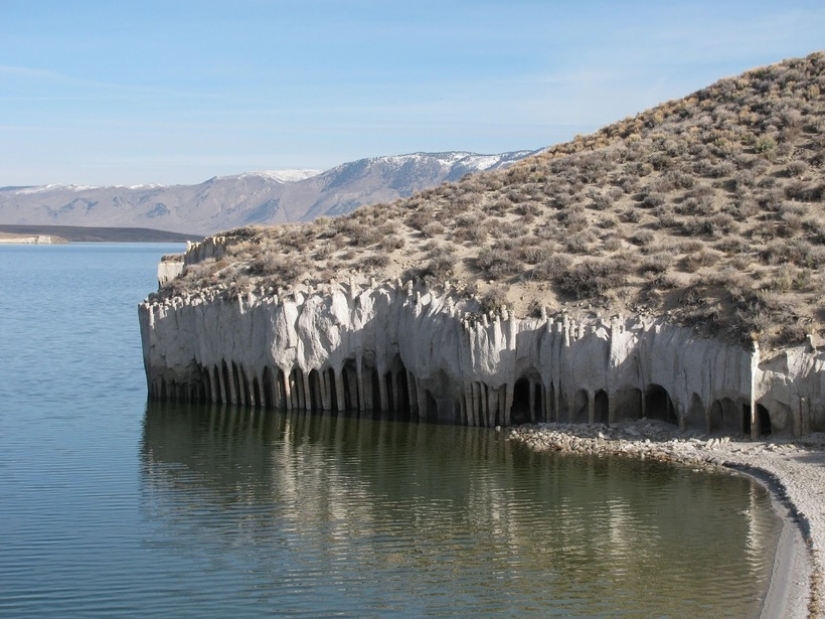
About 760 thousand years ago there was an active volcano nearby. Due to volcanic activity, the snow melted. Meltwater seeped through a layer of hot volcanic ash. This interaction created a rock that resembles cement in its properties.
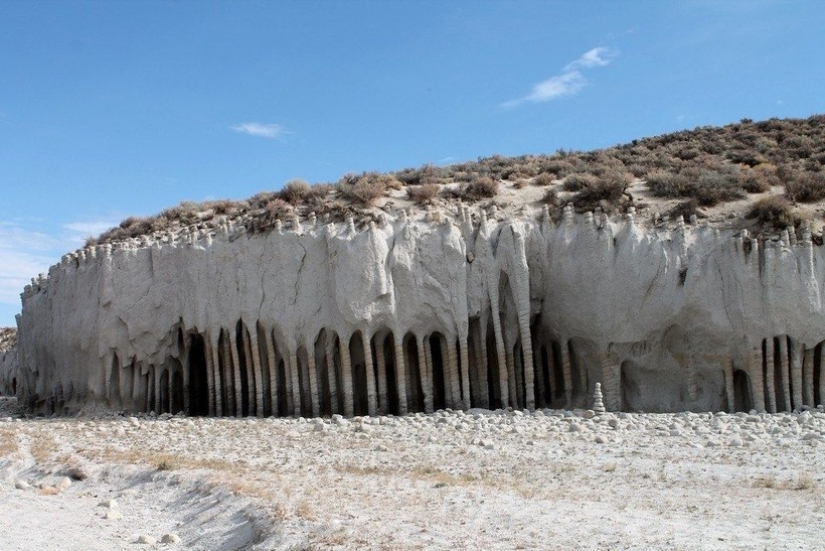
Sections of the coast made of this “cement” were not afraid of water, frost, heat and wind. The area occupied by the columns is more than 400 hectares. Scientists have already counted 5,000 columns. Most of them have a spiral shape, but sometimes they are smooth.
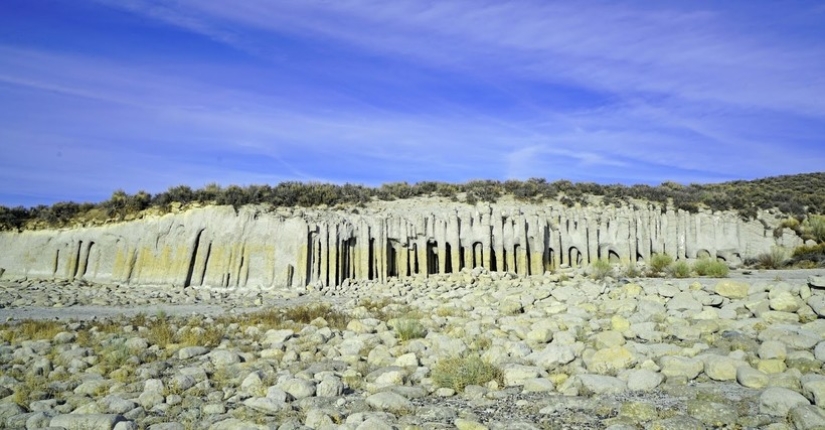
People often call this place California's Pompeii. The colonnade continues to increase in size as the water reaches untouched areas of the shore.
Recent articles

Leonardo da Vinci was accused of being fond of orgies. William the Conqueror, despite all his successes, was called a "Bastard" ...

Modesty? Decency? A sense of tact? No, you haven't heard! Just look at what the people from the selection below are doing! No ...

American documentary photographer Bruce Davidson came to the UK in 1960 for a couple of months on the assignment of Queen magazine. ...